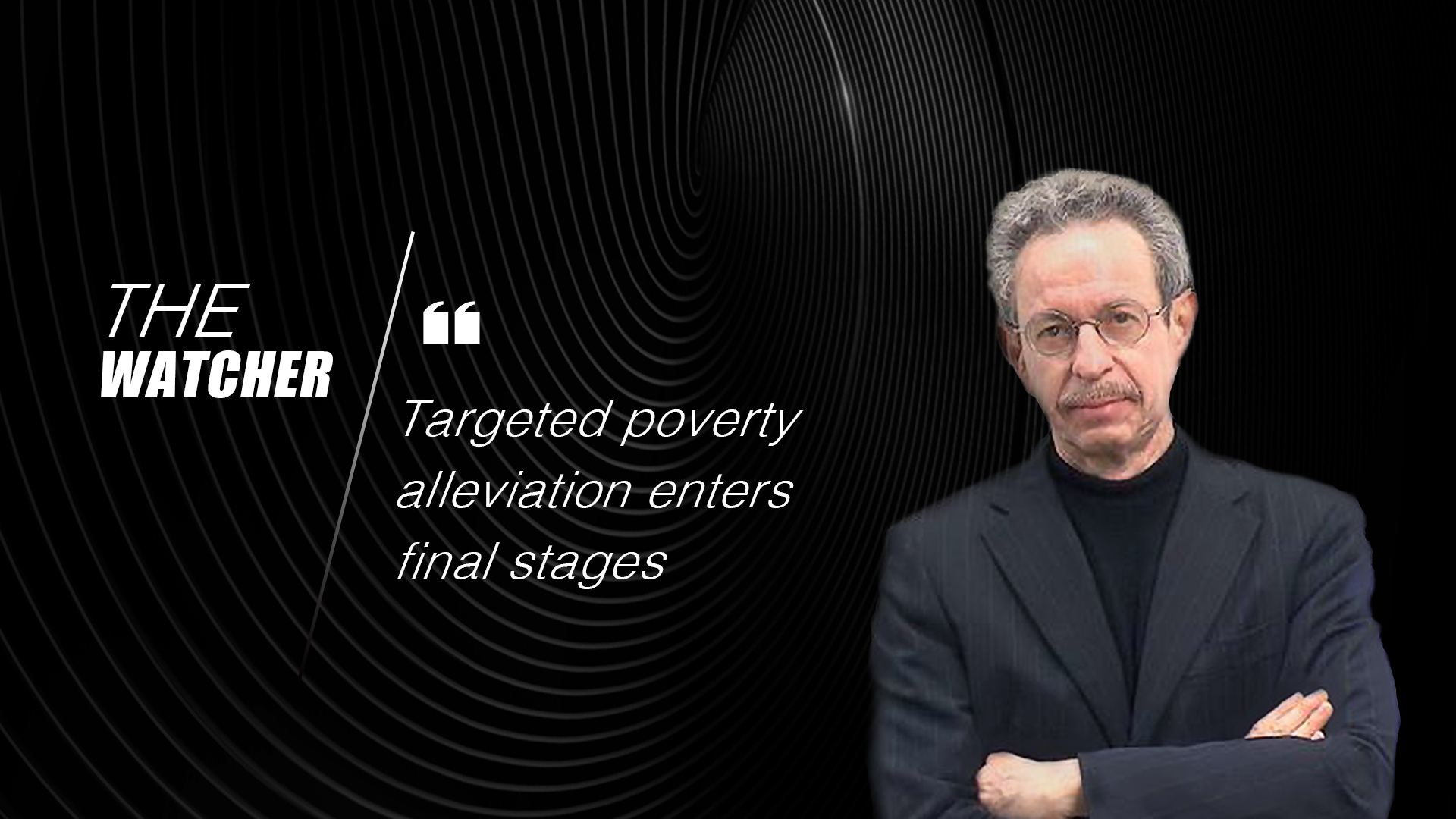
Opinion
22:31, 07-Mar-2019
Targeted poverty alleviation enters final stages
Updated
20:20, 09-Mar-2019
Robert Lawrence Kuhn
04:48

I'm Robert Lawrence Kuhn and here's what I'm watching: China's targeted anti-poverty campaign, now into its final two years.
For over 15 years, China has set an ambitious goal: To become a “moderately prosperous society (in all respects)” by 2020. CPC General Secretary Xi Jinping made it clear that China cannot be a "moderately prosperous society", no matter how high China's national GDP per capita, if any of its citizens continue to live in extreme poverty.
Xi said that he has spent more energy on poverty alleviation than on anything else – a remarkable statement from a head of state. How is poverty alleviation being implemented, especially at the grassroots, where it counts?
Key is the CPC, the Party, mobilizing its organizational power and recruiting CPC cadres at all levels, especially at lower levels, close to China's poor. In fact, Xi has made poverty alleviation a top priority for CPC members, whose careers now prosper or falter based on poverty-alleviation results.
At the end of 2018, China had a rural poverty population of 16.6 million who live under the official extreme poverty line of about 3,000 RMB per year, that is a litter under 500 U.S. dollars. They live in 400 poor counties, nearly 30,000 poor villages. The number of rural poor in China had decreased from about 100 million at the end of 2012, a cumulative decrease of over 80 million in six years.
I thought I knew a good deal about China, but until I spent weeks among China's poor people and poor counties, I had no idea how targeted poverty alleviation worked. I witnessed five methods of poverty alleviation in action: Creating a small industry (usually agriculture); creating a sustainable micro-business; relocating, moving whole villages from remote areas; education and training; ecological compensation for those living in ecologically vulnerable areas; and social security, medical subsidies and direct payments to those who cannot work.
Three things surprised me:
1) Every poor household, tens of millions, has its own dossier, listing every member; it is updated monthly and information is sent to Beijing regularly;
2) Five levels of Party secretaries are directly involved in coordinating and implementing poverty alleviation – province, city, county, township, village.
3) Young Party officials work directly with poor families and they live around two years in poor villages. Moreover, with so much funding in so many places, I'd assumed corruption would be a problem – but I am impressed how public the government has been in disclosing its enormity – reporting, for 2018, 131,000 cases of corruption and improper workstyles in poverty alleviation, involving 177,000 people.
At his press conference during the Two Sessions, Liu Yongfu, minister of the State Council Office of Poverty Alleviation and Development, stated that no one should use poverty alleviation as an excuse to do whatever they want.
I had been travelling in China's poorest areas because I am producing and hosting a major documentary on China's unique “targeted poverty alleviation.” I have a final concern: If successful, if all extreme poverty is eliminated by 2020 – what happens next? Just because a family's income has been raised just above the extreme poverty line for one year hardly makes them "moderately prosperous". How then to make China's poverty reduction campaign sustainable?
I'm keeping watch. I'm Robert Lawrence Kuhn.
(If you want to contribute and have specific expertise, please contact us at opinions@cgtn.com.)

SITEMAP
Copyright © 2018 CGTN. Beijing ICP prepared NO.16065310-3
Copyright © 2018 CGTN. Beijing ICP prepared NO.16065310-3